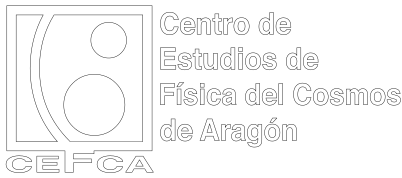The ARRAKIHS space mission selected by the European Space Agency (ESA) and led by Spain, starts its scientific preparation period at the Javalambre Astrophysical Observatory (OAJ), in the province of Teruel. This milestone is a fundamental step towards the launch of the mission planned for 2030, which will study the formation process of galaxies such as the Milky Way, including the role of dark matter.
For the first time, the fibre optic links the OAJ and the headquarters of the Centro de Estudios de Física del Cosmos de Aragón (CEFCA). It thus joins the RedIRIS optical network that links more than 500 scientific and academic institutions in Spain. The investment, financed by the European Union through Next Generation EU funds, amounts to 1.7 million euros and will indirectly benefit some municipalities in Teruel.
The most powerful telescope at the Observatorio Astrofísico de Javalambre (OAJ) opens its first call for scientific teams from all over the world to work with it. Its 56 filters provide so much information that more than 300 shots are required to observe 5 square degrees of the sky. Proposals can be submitted from today until 15 April to the Centro de Estudios de Física del Cosmos de Aragón (CEFCA).
The J-PAS Pathfinder camera of the Javalambre Survey Telescope (JST250) received its first light on the night of 20th February, obtaining succesfully an image of the open cluster NGC1960. After the commissioning of the instrument, the Unique Scientific and Technical Infrastructure (ICTS, in their Spanish initials) Observatorio Astrofísico de Javalambre is working at full capacity, operating routinely the two main telescopes with first-level scientific instrumentation.
The OAJ already keeps the actuator system of JPCam in its clean room. After its arrival in mid January, the engineering team has carried out the integration of the system at the observatory in order to start with the verification and fine-tune processes, first in the clean room and, finally, in the JST250 telescope.
With the successful achievement of this important milestone, e2v has demonstrated that the focal plane is well within the very strict JPCam requirements. The JPCam engineering focal plane has been successfully integrated at e2v (Chelmsford, UK). JPCam, the main scientific instrument of the JST250 telescope, is a 1.2 Gpixel camera designed to perform the J-PAS survey.
T80Cam, the scientific camera of the JAST80 telescope of the Observatorio Astrofísico de Javalambre (CEFCA's observatory), has taken its first image of the Javalambre night sky. This achievement is known as First Light, as this is the first time that light coming from an astronomical object is registered by the T80Cam detector.
J-PLUS filters have been received and accepted at CEFCA headquarters (Teruel).
The filters have been manufactured by SCHOTT (Yverdon-les-Bains, Switzerland). These have been specifically developed for the J-PLUS survey and have required more than two years of research and development effort both from SCHOTT and CEFCA.
In early December, and after an international process of peer review, Brazil’s Observatório Nacional, a partner institution in the Javalambre Physics of the Accelerated Universe Astrophysical Survey collaboration (J-PAS), and British company E2V signed a contract to provide the cryogenic camera system for the JST250 telescope of the Observatorio Astrofísico de Javalambre.




























